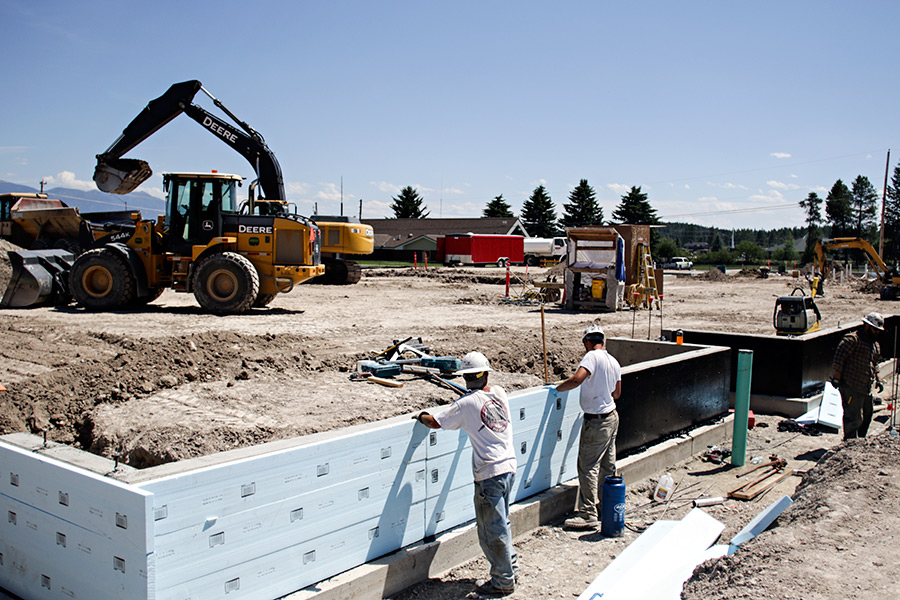In stark contrast to only a few years ago, Flathead County has an abundance of job openings even now during the so-called shoulder season.
The local job service has more than 800 positions listed, ranging from entry-level temporary and part-time work in retail and accommodations to full-time career prospects in health care and other industries. The number of openings has only slightly decreased from the summertime high-water mark of nearly 1,000, which was the most ever listed with Flathead Job Service in Kalispell.
“We’re definitely in a candidate-driven labor market right now. We have to adjust to that,” said Kristen Heck, president of LC Staffing in Kalispell, which provides employee search services for businesses.
The local economy is regaining steam a decade after the bottom fell out in the recession, though significant industrial and demographic shifts are creating headwinds to varying degrees.
In terms of industrial changes, the county’s identity has evolved in many ways over the last 10 years. In September 2007, this was one of the most vibrant and diverse economies in the state as manufacturing, construction and other sectors enjoyed rapid growth. There were 44,120 people employed and 1,583 unemployed.
In the wake of the great recession, Flathead County has developed into a robust tourist destination, leading to an influx of accommodation and service-industry jobs, while manufacturing has remained strong but not as sizeable as before. For example, the number of local jobs in the wood products industry has dropped from 1,537 in 2006 to fewer than 1,000 this year.
Overall, from 2000 to 2015, the number of manufacturing jobs in the county has dropped from 3,881 to 2,669, according to data with the U.S. Bureau of Labor Statistics. In that same span, the number of positions in accommodation and food services has spiked from 4,054 to 5,539.
Last month, there were 42,966 people employed and 2,007 unemployed in the county. The economic improvements are still below the 2007 figures but much improved from only four years ago. In September 2012, there were 39,967 people employed and 3,186 unemployed, according to state labor statistics.
The Kalispell Chamber of Commerce hosted a luncheon last week dedicated to the topic of worker shortages and featured a panel of local human resource managers and economic experts who explained how businesses can address the issue.
Businesses can improve their chances of landing a successful employee by increasing apprenticeship programs, internships and on-the-job training, the panel said. The age-old mantle of furnishing a healthy, positive work environment remains as important as ever, while the need for fostering a good company brand online and in practice is more significant than before.
Heck with LC Staffing explained the changing demographics of Montana’s labor force, primarily discussing the millennial generation and its unique attributes.
“We’ve trained them to be purposeful and find work that makes a difference in this world,” Heck said, referring to the generation of workers between 18 and 35.
“Their generational core values are very different. They want to know, ‘What is your company doing to make the planet better? How are you serving your community? How can I be part of that?’ As an employer, you should talk about that.”
Currently across the U.S., 38 percent of the workforce is made up of millenials. By 2025, half of the nation’s workers will be millenials.
“Our generation lives to work. Their generation, the vast majority, they work to live,” Nick Moschetti with Flathead Job Service said.
At the same time, there is also a growing number of workers in the Baby Boomer generation retiring and vacating positions, tightening the labor market even further. Nearly 6.5 percent of Montana’s labor force is already over 65 years old, the second-highest share in the U.S. Another 96,000 workers are between 55 and 64 and approaching retirement.
Due to this flood of retirements and worker shortage, economists with the Montana Department of Labor and Industry are forecasting slow job growth in the upcoming years.
The worker shortage is leading to an increase in wages, according to state economists, which is welcome news in a state with historically some of the lowest-paying positions in the nation on average.
Concerns remain about Flathead County’s shift to a majority of service industry and retail positions because those jobs are lower paying on average compared to manufacturing and other industrial positions.
